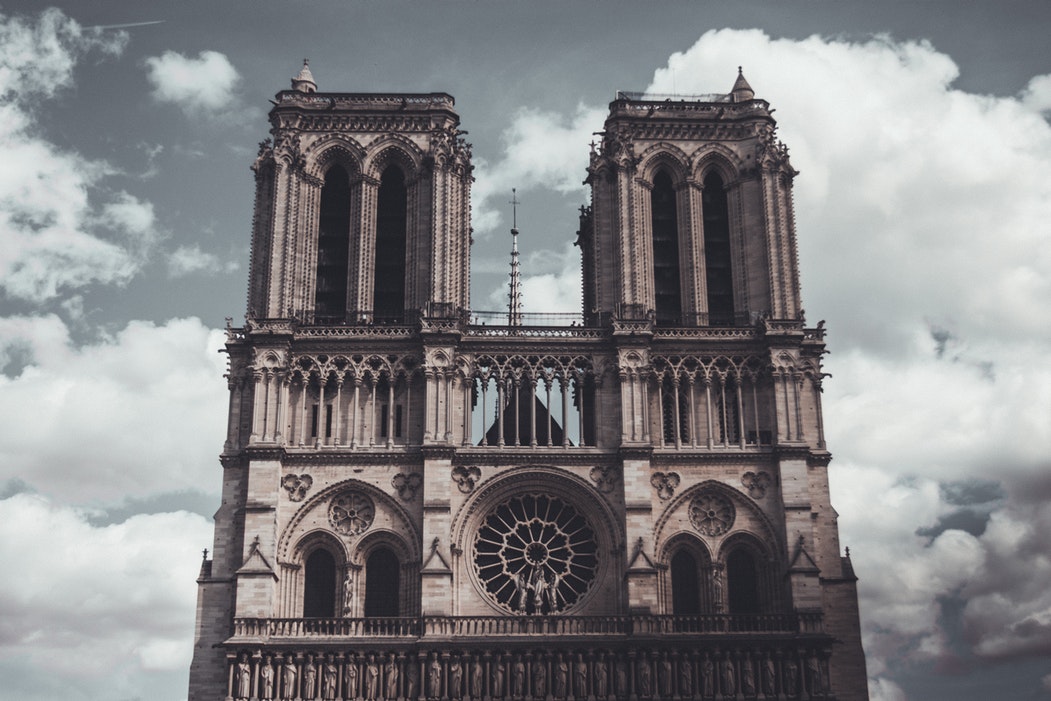A reprimand on the restoration of Notre-Dame
On April 15 2019, the world watched on in horror as the Notre-Dame Cathedral, one of Paris’ most long-standing and widely adored monuments, was engulfed by flames. It was only thanks to the fearless efforts of Parisian firefighters that any parts of the 850 year old monument survived. Videos taken by people on the banks of the Seine were shared as they cried, sang, and prayed together in the wake of the dreadful cultural loss that was happening before their eyes.
One prominent onlooker was the French President, Emmanuel Macron. Shown amongst the other horrified witnesses on the news, Macron’s expression mirrored the heartbreak of those around him. Now, in the weeks after the devastating blaze, it is Macron who is facing criticism from a group of more than 1,000 conservators, academics, and experts, who, in an open letter published in Le Figaro, all insist that his target for the restoration of Notre-Dame is too ambitious and could ultimately be detrimental to the building itself.
Macron’s ambitious restoration target, for the cathedral to be ‘more beautiful than ever’ by 2024, was announced shortly after the devastating fire. For such a target to be possible, laws and legislations will be bypassed – leading some to fear that Macron is rushing the restoration.
It did not take long for the bold statement to draw further criticism. Macron has been accused of fitting the restoration into his political schedule, with his term of office ending in 2022 and the Olympic Games taking place in Paris in 2024. Macron, it has been said, wishes for definitive progress in reconstructing Notre-Dame before these two milestones.
There is an as-yet unknown amount of damage to the interior stonework, some gargoyles, and some paintings and textiles
The five-year restoration target has sparked concern that the necessary caution and consideration will not be afforded to Notre-Dame in its reconstruction. Senior figures such as Nicolas Milovanovic and Cécile Scailliérez, curators at the Louvre, and Alexandre Gady, head of the non-profit organization Sites & Monuments and professor at the Sorbonne, form just a small fraction of the concerned hundreds who have signed the extensive open letter to highlight such concerns. In the letter itself, the President is urged not to ‘erase the complexity of thought that must surround this building work with a display of efficiency’.
It should be remembered that although hundreds of hardworking firefighters managed to save Notre-Dame’s bell towers, its relics, and a large portion of the cathedral’s interior, the building still suffered a considerable amount of damage as a result of the fire. One of the most enduring images of the night, for example, was that of the nineteenth-century gothic spire as it split in half and fell to the ground, consumed by flames. Other parts of the cathedral were left in ruin too. The 850 year old wooden latticework roof structure, known as ‘the forest’, was destroyed. There is also an as yet unknown amount of damage to the interior stonework, some gargoyles, and some paintings and textiles.
The task of restoring Notre-Dame is one of the greatest challenges facing modern France
Some of the parts of the cathedral that seem, outwardly at least, to remain intact will nevertheless require painstaking investigation during the restoration process. According to Jenny Alexander at the University of Warwick, although all the stunning stained-glass rose windows remain complete, it is possible that they have suffered ‘thermal shock’ as a result of the extreme heat of the fire being combatted with cold water. All three windows will need an extensive assessment of their structural integrity. In the light of the complexities surrounding the surviving parts of the cathedral and the otherwise extensive damage, the task of restoring Notre-Dame is one of the greatest challenges facing modern France and is, according to the signatories of the open letter, a task that should not be rushed.
To fail to afford Notre-Dame the consideration and patience it deserves in its restoration would be a misstep. The initial construction of the cathedral, after all, took around one hundred years. As the letter states, ‘the challenge of these works goes far beyond political terms of office, beyond generations, and we will be judged by how we respond’. By writing their open letter, the 1,000-strong group of concerned signatories have highlighted the growing complexities of the restorative task that will challenge France and its people for years to come, in their mission to preserve their cultural heritage.

Comments